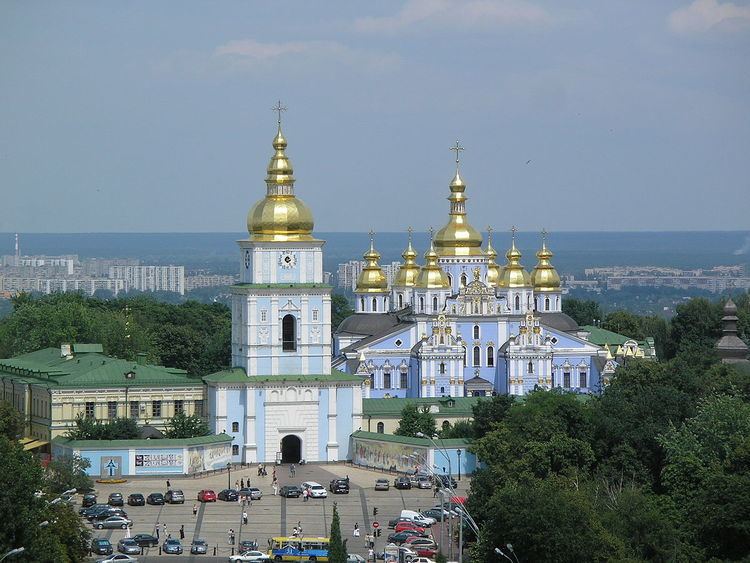 | ||
Ukrainian Baroque or Cossack Baroque or Mazepa baroque is an architectural style that emerged in Ukraine during the Hetmanate era, in the 17th and 18th centuries.
Ukrainian Baroque is distinct from the Western European Baroque in having more moderate ornamentation and simpler forms, and as such was considered more constructivist. Many Ukrainian Baroque buildings have been preserved, including several buildings in Kyiv Pechersk Lavra and the Vydubychi Monastery in Kyiv.
The best examples of Baroque painting are the church paintings in the Holy Trinity Church of the Kyiv Pechersk Lavra. Rapid development in engraving techniques occurred during the Ukrainian Baroque period. Advances utilized a complex system of symbolism, allegories, heraldic signs, and sumptuous ornamentation.
Certain features of the Ukrainian baroque, such as bud and pear-shaped domes, were borrowed by the similar Naryshkin baroque movement in 17th-18th century Moscow. Modern Ukrainian church buildings, such as Troeshchina Cathedral, are also built in this style, but it is not typical for Ukrainian baroque. Originating in the 17th century, Ukrainian baroque reached its golden age in the time of Ivan Mazepa. Mazepa baroque is original synthesis of West-European baroque architectural forms and Ukrainian national baroque architectural traditions.
